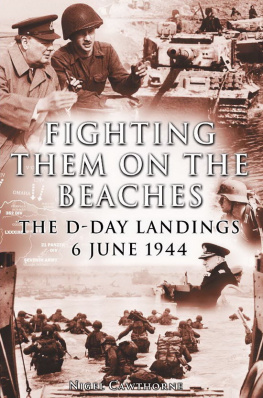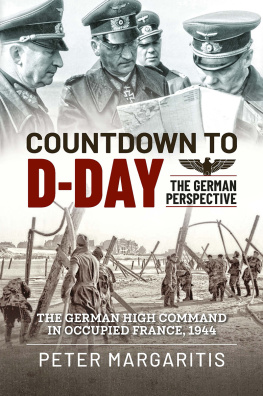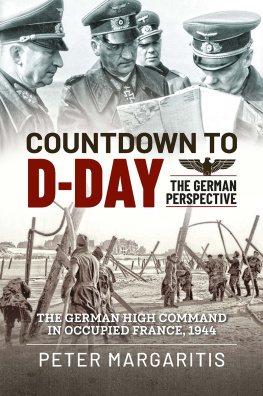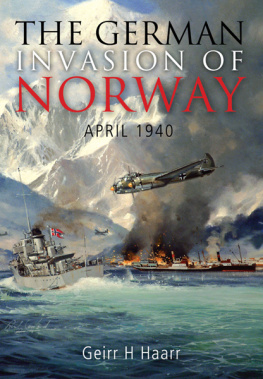Copyright 2000 by Greenhill Books
First Skyhorse Publishing 2016
Introduction 2016 by Skyhorse Publishing, Inc.
All rights reserved. No part of this book may be reproduced in any manner without the express written consent of the publisher, except in the case of brief excerpts in critical reviews or articles. All inquiries should be addressed to Skyhorse Publishing, 307 West 36th Street, 11th Floor, New York, NY 10018.
Skyhorse Publishing books may be purchased in bulk at special discounts for sales promotion, corporate gifts, fund-raising, or educational purposes. Special editions can also be created to specifications. For details, contact the Special Sales Department, Skyhorse Publishing, 307 West 36th Street, 11th Floor, New York, NY 10018 or info@skyhorsepublishing.com.
Skyhorse and Skyhorse Publishing are registered trademarks of Skyhorse Publishing, Inc., a Delaware corporation.
Visit our website at www.skyhorsepublishing.com.
10 9 8 7 6 5 4 3 2 1
Library of Congress Cataloging-in-Publication Data is available on file.
Cover design by Rain Saukas
Print ISBN: 978-1-5107-0357-5
Ebook ISBN: 978-1-5107-0366-7
Printed in the United States of America
Contents
Illustrations
Plates (between pages 128 and 145)
Maps and diagrams
Note: The maps on pages 52, 56, 176, 206 and 234 are reproduced directly from original and surviving maps and sketch maps held in the National Archives .
Contributors to this Volume:
Positions Held on D-Day
General der Infanterie Gnther Blumentritt: Chief of Staff to Commander-in-Chief West
Oberstleutnant Friedrich von Criegern: Assistant Chief of Staff (la*), LXXIV Korps
Grossadmiral Karl Dnitz: Commander-in-Chief, German Navy
Oberst Paul Frank: Chief of Staff (Ia), 346th Infantry Divisison
Generalleutnant Edgar Feuchtinger: Commanding General, 21st Panzer Division
Generalmajor Rudolf, Freiherr von Gersdorff: Chief of Staff, Seventh Army (at end of July)
General der Panzertruppen Leo, Freiherr Geyr von Schweppenburg: Commanding General, Panzer Gruppe West
Oberstleutnant Dr Friedrich, Freiherr von der Heydte: Commanding Officer, 6th Fallschirmjger Regiment.
Oberstleutnant Gnther Keil: Commanding Officer, 1058th Infantry Regiment
Generalfeldmarshall Wilhelm Keitel: Chief of Staff, Wehrmacht High Command
Generalmajor Fritz Krmer: Chief of Staff, I SS Panzer Korps
Generaloberst Alfred Jodl: Chief of Operations, Wehrmacht High Command
General der Panzertruppen Heinrich, Freiherr von Lttwitz: Commanding General, 2nd Panzer Division
Generalleutnant Max Pemsel: Chief of Staff, Seventh Army (until replaced by von Gersdorff)
General der Flaktruppen Wolfgang Pickert: Commanding General, III Flak Korps
Generalleutnant Joseph Reichert: Commanding General, 711th Infantry Division
Generalleutnant Richard Schimpf: Commanding General, 3rd Fallschirmjger Division
Generalleutnant Karl Wilhem von Schlieben: Commanding General, 709th Infantry Division
Captain Herbert Schoch: Training Officer, Division Staff, 243rd Infantry Division
Major Dr Percy E. Schramm: Staff Officer at OKW, responsible for the War Diary
Generalleutnant Dr Hans Speidel: Rommels Chief of Staff
Oberst iG Anton Staubwasser: Chief of Intelligence, Army Group B Staff
Generalmajor Gerhard Triepel: Commanding Officer, 1261st Coast Artillery Regiment
Konteradmiral Gerhard Wagner: Chief of Staff to Commander-in-Chief German Navy
General Walter Warlimont: Jodls Deputy Chief of Operations
Generlleutnant Gustav Wilke: Commanding General, 5th Fallschirmjger Division
Oberstleutnant Fritz Ziegelmann: Assistant Chief of Staff (Ia*), 352nd Infantry Division
Generalloberst Bodo Zimmermann: Assistant Chief of Staff, OB West
Foreword
Success or failure on D-Day was about which side would win the race to dominate the Normandy foreshore at the end of the first day, and hold it. Cornelius Ryans epic account of The Longest Day , suggests the D-Day battle was won within the first twenty-four hours. This is too simplistic an assertion. General Bernard Montgomery, who commanded the Allied ground forces, identified potential crisis points in his invasion-planning parameters. He could only mount a joint airborne and amphibious assault with ten divisions, which he anticipated would clash with five German divisions on the coastline. There could be ten German divisions in situ by the end of the day and as many as fifteen at the six-day point and eighteen inside eight days. The Allies could land fifteen divisions in six days and maybe eighteen by D+8, when the Germans might counterattack with as many as twenty-four divisions. D-Day could not be judged a success until a stalemate of sorts was achieved.
By the 14th of June, both sides were bogged down in village fighting along the coast. At this eight-day point, German aims reflected in the preamble to surviving copies of attack orders were less concerned with throwing the enemy back into the sea than with creating conditions for a counterstroke. At this stage the fight for D-Day beaches was over; the battle of Normandy was about to begin.
David Isby has brought together a virtual treasure-trove of firsthand German documentary material. Two-thirds of it relates to the strategic and operational level of command and preparation for the coming invasion, and the operational deployment of formations employed along the coast. The final third of the book covers the divisions on D-Day, with a smaller section about subsequent counterattacks. Of particular interest is the translation of the 352 Division Telephone Diary of Omaha Beach and its battles along the Bayeux Coastal Defence Sector, a fascinating twenty-four-hour command post view of the invasion battle.
The Fhrer wanted answers. How could the Allies break in so quickly? The Chiefs of Staff of both OB West and Army Group B were requested to explain what alarm procedures were in place on June 6, because the English have again, as in the Nettuno [Anzio] operation reported that German soldiers had to be hauled out of their beds in their underclothes. Excuses were needed for some reports. Many of the accounts are postwar interrogations conducted by the victors, lessons learned in US Army parlance. Senior German officers, humiliated in defeat liked to offer a sanitized interpretation of events, to preserve their view of history, or infer that responsibility for shortcomings lay elsewhere.
Occupied mainland France was at relative peace for four years before the invasion, providing a rest and recuperation area for many units. German readiness in this context was less problematical than credibly believing what reconnaissance was telling them. No German aerial photographs were taken of Allied disembarkation ports after May 24. Hauptmann Eberspcher flew his low-level reconnaissance flight from KG 52 over the invasion fleet while it was underway, dispatching a report by 0500, which appears to have been ignored. Blaming bad weather was another excuse for not detecting the approaching allied armada, but German meteorological reports did not report unfavorable weather, simply that conditions around the Pas de Calais were worse than Normandy. When the first live rounds were fired as paratroopers dropped on the eve of D-Day, German coastal units were still conducting night exercises with blank ammunition. Not one contemporary German document dared admit that psychological surprise was complete.
The Wehrmacht was land-centric, unable to visualize the size and breadth of such an invasion fleet. In 1940 it had made a similar mistake, failing to detect the scale of the naval evacuations at Dunkirk. Floating harbors and swimming tanks lay outside conventional army staff planning parameters. Landings at Anzio on the Italian Mediterranean coast had been checked earlier that year. Units fortifying the Atlantic Wall knew that conditions would be much more boisterous on the stormy Channel.













